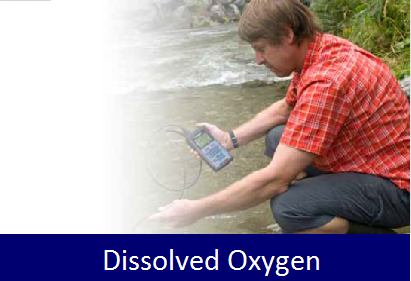Dissolved Oxygen
Dissolved Oxygen Measurement
WTW offers ...
The measurement of dissolved oxygen has it biggest importance in environmental analysis, but also in some industrial applications.
In its simplest form a dissolved oxygen sensor contains a working electrode and a counter-electrode. Both electrodes are located in an electrolyte system which is separated from the sample by a gas-permeable membrane. The working electrode reduces the oxygen molecules to hydroxide ions. In this electrochemical reaction a current flows from the counter-electrode to the working electrode. The more oxygen is present in the sample, the larger the current signal. From this signal the D.O. meter calculates the concentration of dissolved oxygen in the sample.
The optical method uses the so-called fluorescence quenching. The membrane contains a special dye which is excited by light. The fluorescing light will be changed in its intensity and phase by oxygen. This signal change can be detected and evaluated. It is the principle of modern optical D.O. sensors which also digitally process the signal and send it to the meter.
• inoLab® Laboratory Dissolved Oxygen Meters
• Portable Dissolved Oxygen Meters
• Galvanic Dissolved Oxygen Sensors
• Digital IDS Dissolved Oxygen Sensors
• Accessories









